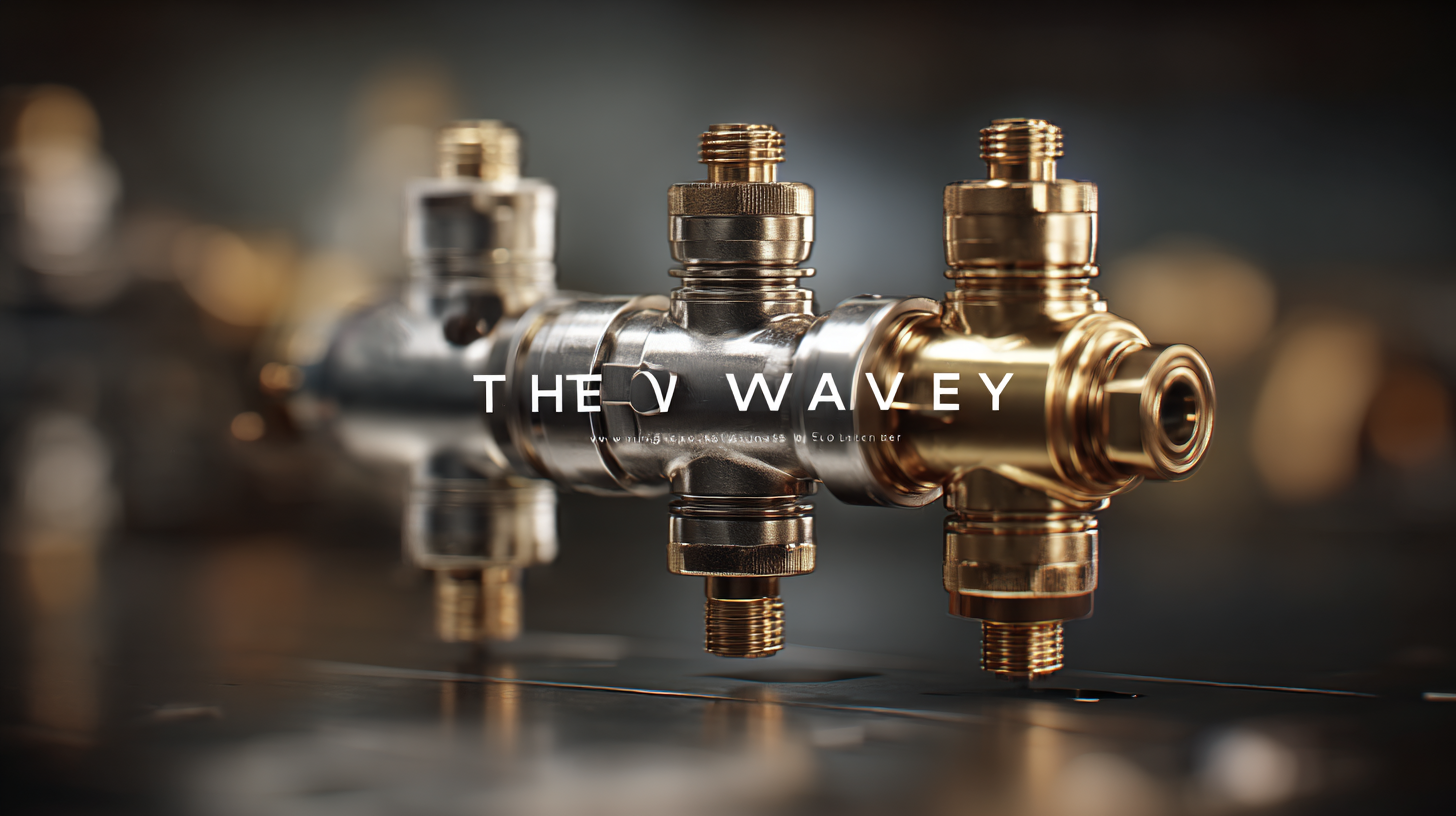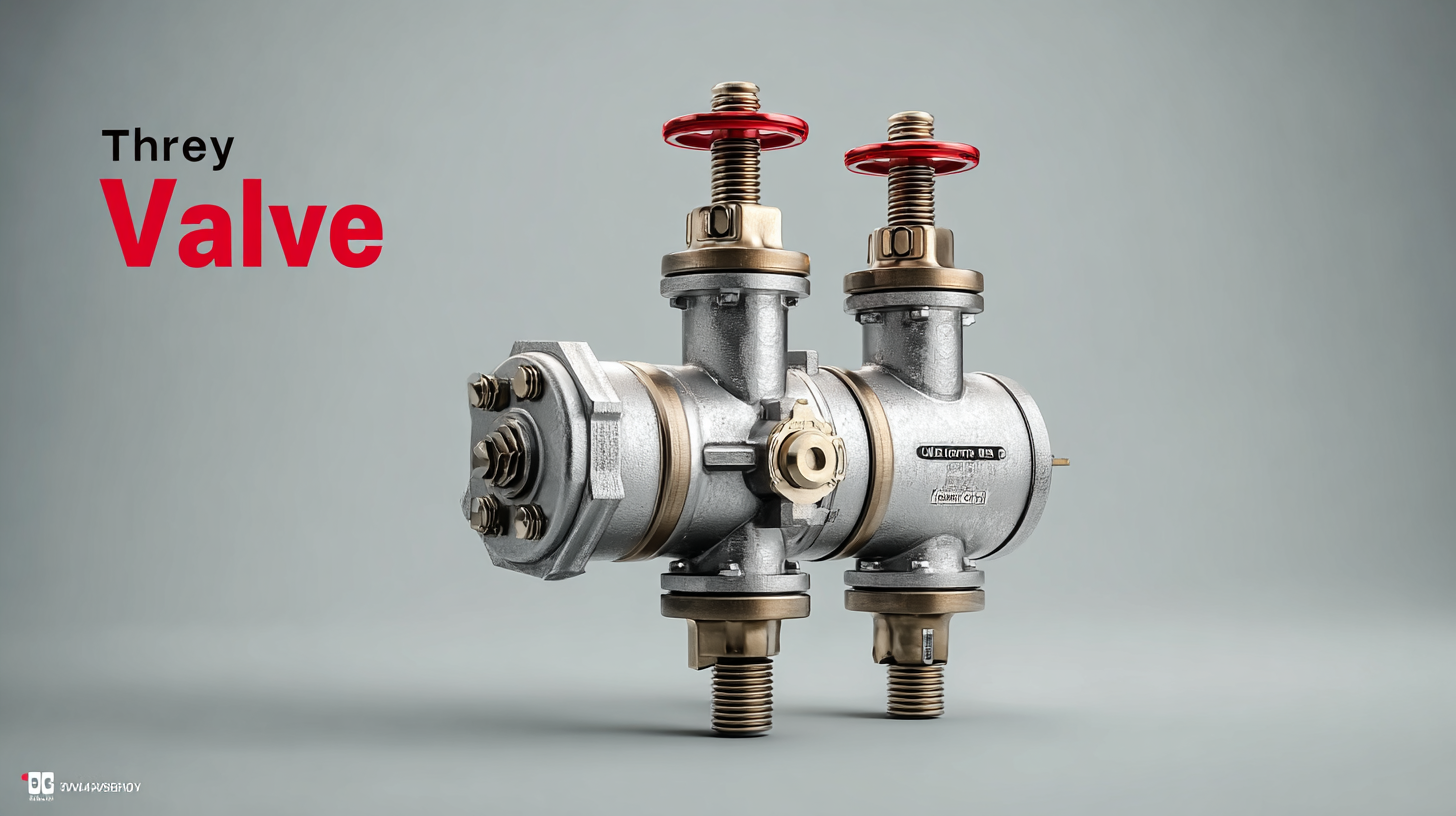 In the realm of fluid control systems, the Three Way Valve stands out as a pivotal component, facilitating complex flow management across various industries. As technology evolves and the demand for efficiency and sustainability grows, it's essential to explore innovative alternatives that can enhance the standard solutions provided by traditional three way valves. This blog delves into emerging technologies and unique designs that not only improve operational performance but also align with modern environmental standards.
In the realm of fluid control systems, the Three Way Valve stands out as a pivotal component, facilitating complex flow management across various industries. As technology evolves and the demand for efficiency and sustainability grows, it's essential to explore innovative alternatives that can enhance the standard solutions provided by traditional three way valves. This blog delves into emerging technologies and unique designs that not only improve operational performance but also align with modern environmental standards.
By examining novel materials, cutting-edge automation, and adaptive control mechanisms, we aim to uncover the potential of these innovative alternatives, paving the way for smarter, more efficient fluid handling systems. Join us on this journey to discover how rethinking the Three Way Valve can lead to groundbreaking advancements in fluid dynamics.
The landscape of three-way valve applications is undergoing a significant transformation driven by innovative technologies. Recent advancements highlight how modern solutions are enhancing the functionality and efficiency of valves across various sectors. For instance, new valve designs are emphasizing the precise control of industrial fluids, including water, oils, and steam, showcasing the shift towards tailored solutions that meet specific application needs.
Digital innovations are also playing a crucial role in reshaping the valve sector. The integration of electric actuators is proving to be a viable alternative to traditional pneumatic solutions, particularly in reducing environmental impacts such as methane emissions. This trend underscores the industry's commitment to sustainability while enhancing operational precision. Moreover, the evolution of spray application technologies, including advancements in nozzles and valves, demonstrates the push for greater accuracy and efficiency in process control, further underscoring the innovative paths being explored in three-way valve applications.
The demand for sustainable materials in valve manufacturing has never been more critical, especially as industries seek innovative solutions to reduce their environmental footprint. According to a report by Smithers Pira, the global market for sustainable materials in industrial applications is projected to reach $290 billion by 2025, reflecting a growing trend towards eco-friendly manufacturing practices. In valve production, materials such as biopolymers, recycled metals, and composites not only reduce waste but also enhance the overall performance and durability of the products.
Moreover, the integration of sustainable materials presents an opportunity to meet regulatory standards while also appealing to the increasingly environmentally conscious consumer. A recent study by MarketsandMarkets highlights that over 60% of manufacturers in the valve sector are exploring bio-based alternatives to traditional materials, which often come with a significant carbon footprint. This shift not only addresses the urgent need for sustainability but also positions companies at the forefront of innovation, enabling them to leverage new technologies and processes that resonate with their clients and regulatory frameworks alike.

In the realm of fluid control systems, three-way valves have long stood as the conventional choice for managing flow directions efficiently. However, as industries evolve, the limitations of traditional valve designs are becoming increasingly apparent. A comparative analysis reveals that while conventional valves offer reliability, they often fall short in adaptability and energy efficiency when contrasted with innovative alternatives.
One noteworthy alternative is the use of smart valves equipped with advanced sensors and automation capabilities. These modern designs not only enable precise flow control but also provide real-time data, significantly improving operational efficiency. Tips for selecting the right alternative include assessing the specific flow requirements and considering integration compatibility with existing systems.
Another viable option is the implementation of modular valve systems, which allow for flexible configurations tailored to unique project demands. Such systems often reduce maintenance downtime and provide the capability to easily scale operations. When evaluating these alternatives, it is crucial to analyze factors such as cost, maintenance needs, and overall system compatibility to ensure optimal performance in diverse applications.
As industries continue to evolve, the integration of IoT technology into valve solutions has marked a significant turning point. Smart valves equipped with IoT capabilities enable real-time monitoring and control, allowing for improved operational efficiency and reduced downtime. According to a recent report by MarketsandMarkets, the smart valve market is expected to grow from USD 2.5 billion in 2021 to USD 4.8 billion by 2026, at a CAGR of 14.8%. This growth is driven by the increasing demand for automation and smart infrastructure across various sectors, including oil and gas, water management, and manufacturing.
One of the key benefits of implementing smart valves is their ability to predict failures through data analytics, reducing the risk of unexpected shutdowns. By utilizing sensors and AI algorithms, these valves can collect data on flow rates, pressure, and temperature, providing operators with insights to make informed decisions.
**Tip:** When considering the integration of smart valves, prioritize those that are compatible with existing systems and offer robust cybersecurity features to protect sensitive data.
Furthermore, smart valves can significantly enhance energy efficiency. A study from the American Council for an Energy-Efficient Economy revealed that optimizing valve performance can lead to energy savings of up to 25% in industrial applications.
**Tip:** Regular maintenance and software updates are essential to ensure smart valves operate at peak performance, maximizing their energy-saving potential.
| Feature | Traditional Valve | Smart Valve | Performance Improvement (%) |
|---|---|---|---|
| Real-time Monitoring | No | Yes | 85% |
| Energy Efficiency | Low | High | 30% |
| Maintenance Needs | High | Low | 60% |
| Integration with IoT | Limited | Fully Integrated | 50% |
| Cost of Operation | Moderate | Low | 20% |
In the pursuit of efficiency and effectiveness in industrial applications, alternative valve solutions are gaining traction. Many industries have turned to innovative alternatives to the traditional three-way valve, leading to significant improvements in performance and sustainability. For instance, a chemical processing plant recently replaced its conventional three-way valves with intelligent flow control valves, resulting in a 20% reduction in energy consumption and a 15% increase in throughput. This transition not only optimized production but also enhanced the plant’s overall environmental footprint.
Another compelling case comes from the water treatment sector, where a facility implemented membrane valves instead of standard three-way options. The shift allowed for more precise flow regulation and minimized the risk of cross-contamination, which is crucial for maintaining water quality standards. As a result, the facility reported a 30% decrease in maintenance costs and an increase in system reliability. These success stories demonstrate that exploring alternative valve solutions can lead to significant advancements in industrial efficiency and operational excellence.
